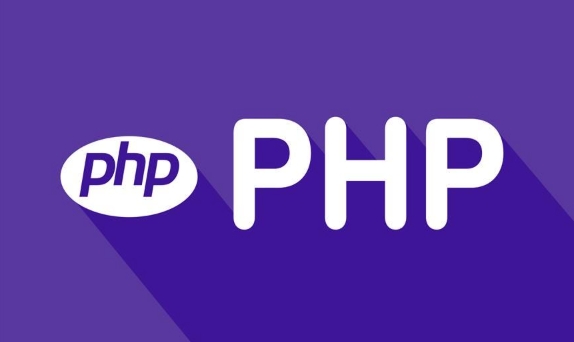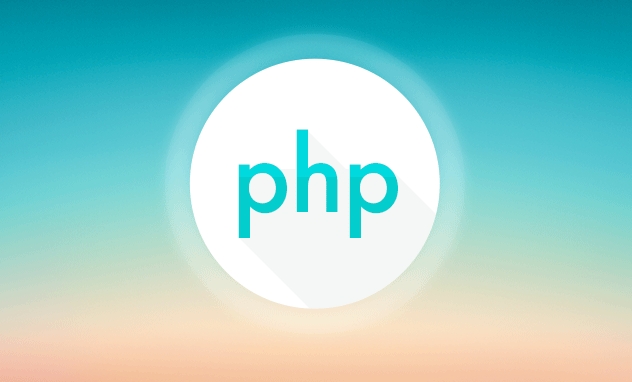Deploying a Scalable PHP Environment on AWS EC2 from Scratch
Jul 26, 2025 am 09:52 AMLaunch an EC2 instance with Amazon Linux, appropriate instance type, secure security group, and key pair. 2. Install LAMP stack by updating packages, installing Apache, MariaDB, PHP, starting services, securing MySQL, and testing PHP. 3. Decouple components by moving database to RDS, storing uploads in S3, and using ELB with Auto Scaling across Availability Zones. 4. Automate setup using User Data scripts, AWS Systems Manager for configuration management, and implement CI/CD with CodePipeline and CodeDeploy. 5. Secure with ACM SSL certificates on ALB, enforce HTTPS, optimize performance via OPcache, ElastiCache, and CloudFront, and monitor using CloudWatch, RDS Insights, and CloudTrail. This scalable, secure, and maintainable PHP environment on AWS EC2 provides full control and a strong foundation for future growth.

Deploying a scalable PHP environment on AWS EC2 from scratch might sound complex, but once you break it down into manageable steps, it becomes a repeatable and reliable process. Whether you're building a small web app or planning for high-traffic growth, setting up a solid foundation on AWS is key. Here’s how to do it right — from zero to scalable.

1. Set Up Your EC2 Instance with the Right Configuration
Start by launching an EC2 instance optimized for PHP workloads.
- Choose an Amazon Machine Image (AMI): Use Amazon Linux 2 or Amazon Linux 2023 — both are lightweight, secure, and well-supported.
-
Instance Type: Begin with
t3.mediumfor development or low traffic. For production, consider auto-scaling later, but start withm5.largeif you expect moderate load. -
Security Group: Open ports:
- 80 (HTTP)
- 443 (HTTPS)
- 22 (SSH — restrict to your IP)
-
Key Pair: Download and securely store your
.pemkey for SSH access.
Once launched, SSH into your instance:

ssh -i your-key.pem ec2-user@your-ec2-public-ip
2. Install and Configure LAMP Stack (Linux, Apache, MySQL, PHP)
Now install the core components for PHP applications.
Update and install packages:
sudo yum update -y sudo amazon-linux-extras install lamp-mariadb10.2-php7.2 php7.2 -y sudo yum install httpd mariadb-server -y
Start and enable services:
sudo systemctl start httpd sudo systemctl enable httpd sudo systemctl start mariadb sudo systemctl enable mariadb
Secure MySQL:
Run:

sudo mysql_secure_installation
Set a root password, remove anonymous users, and disable remote root login.
Test PHP:
Create a test file:
echo "<?php phpinfo(); ?>" | sudo tee /var/www/html/info.php
Visit http://your-ec2-ip/info.php — you should see the PHP info page.
? Important: Remove
info.phpafter testing for security.
3. Prepare for Scalability: Decouple Components
A single EC2 instance doesn’t scale. To grow, decouple your architecture:
Move Database to Amazon RDS
- Launch a MySQL or MariaDB RDS instance in the same VPC.
- Update your PHP app to use the RDS endpoint instead of localhost.
- Enable Multi-AZ for failover and plan for read replicas later.
Store Uploads in Amazon S3
- Create an S3 bucket for user uploads (images, documents).
- Use the AWS SDK for PHP (
aws/aws-sdk-php) to handle uploads. - Serve assets via CloudFront for better performance.
Use Elastic Load Balancer (ELB) Auto Scaling
- Create a Target Group pointing to your EC2 instances.
- Set up an Application Load Balancer (ALB) to distribute traffic.
- Create a Launch Template with your configured AMI.
- Configure Auto Scaling Group across multiple Availability Zones.
? This allows your app to spin up new instances during traffic spikes.
4. Automate Deployment and Configuration
Manual setups don’t scale. Automate using:
User Data Script (for bootstrapping):
When launching EC2 instances, use User Data to auto-install software:
#!/bin/bash yum update -y amazon-linux-extras install lamp-mariadb10.2-php7.2 php7.2 -y yum install httpd mariadb-server -y systemctl start httpd systemctl enable httpd
This ensures every new instance comes pre-configured.
Use AWS Systems Manager (SSM)
- Eliminate SSH keys by using Session Manager.
- Run commands across instances using SSM Run Command.
- Store configuration secrets in Parameter Store or Secrets Manager.
CI/CD Pipeline (Optional but Recommended)
- Use AWS CodePipeline CodeBuild to deploy code from GitHub.
- Deploy to EC2 via CodeDeploy or directly to S3 sync script.
- Or go further with containerization (Docker ECS), but that’s another path.
5. Secure and Optimize
HTTPS with SSL
- Request a free certificate via AWS Certificate Manager (ACM).
- Attach it to your ALB.
- Redirect HTTP to HTTPS using ALB listener rules.
Performance Tuning
- Enable OPcache in
php.ini:opcache.enable=1 opcache.fast_shutdown=1
- Use ElastiCache (Redis or Memcached) for session storage and caching.
- Offload static assets to CloudFront (CDN).
- Enable CloudWatch Alarms for CPU, memory, and latency.
- Install Amazon CloudWatch Agent to monitor memory usage.
- Use RDS Performance Insights and CloudTrail for auditing.
- Starts simply
- Scales automatically
- Is secure and maintainable
Monitoring
Final Notes
You now have a PHP environment on EC2 that:
But remember: EC2 is just one option. For even better scalability and lower ops overhead, consider migrating to AWS Elastic Beanstalk, ECS with Fargate, or Lambda with Bref (for PHP) later.
For now, this EC2-based setup gives you full control and a deep understanding of your stack.
Basically, it's not about doing everything at once — it's about building the right foundation so scaling later feels natural, not chaotic.
The above is the detailed content of Deploying a Scalable PHP Environment on AWS EC2 from Scratch. For more information, please follow other related articles on the PHP Chinese website!

Hot AI Tools

Undress AI Tool
Undress images for free

Undresser.AI Undress
AI-powered app for creating realistic nude photos

AI Clothes Remover
Online AI tool for removing clothes from photos.

Clothoff.io
AI clothes remover

Video Face Swap
Swap faces in any video effortlessly with our completely free AI face swap tool!

Hot Article

Hot Tools

Notepad++7.3.1
Easy-to-use and free code editor

SublimeText3 Chinese version
Chinese version, very easy to use

Zend Studio 13.0.1
Powerful PHP integrated development environment

Dreamweaver CS6
Visual web development tools

SublimeText3 Mac version
God-level code editing software (SublimeText3)
 Mastering PHP-FPM and Nginx: A High-Performance Setup Guide
Jul 25, 2025 am 05:48 AM
Mastering PHP-FPM and Nginx: A High-Performance Setup Guide
Jul 25, 2025 am 05:48 AM
NginxhandlesstaticfilesandroutesdynamicrequeststoPHP-FPM,whichprocessesPHPscriptsviaFastCGI;2.OptimizePHP-FPMbyusingUnixsockets,settingpm=dynamicwithappropriatemax_children,spareservers,andmax_requeststobalanceperformanceandmemory;3.ConfigureNginxwit
 Setting Up PHP on macOS
Jul 17, 2025 am 04:15 AM
Setting Up PHP on macOS
Jul 17, 2025 am 04:15 AM
It is recommended to use Homebrew to install PHP, run /bin/bash-c"$(curl-fsSLhttps://raw.githubusercontent.com/Homebrew/install/HEAD/install.sh)" to install Homebrew, and then execute brewinstallphp or a specified version such as brewinstallphp@8.1; after installation, edit the php.ini file in the corresponding path to adjust memory_limit, upload_max_filesize, post_max_size and display_
 Harnessing the Power of WSL 2 for a Linux-Native PHP Development Workflow
Jul 26, 2025 am 09:40 AM
Harnessing the Power of WSL 2 for a Linux-Native PHP Development Workflow
Jul 26, 2025 am 09:40 AM
WSL2isthenewstandardforseriousPHPdevelopmentonWindows.1.InstallWSL2withUbuntuusingwsl--install,thenupdatewithsudoaptupdate&&sudoaptupgrade-y,keepingprojectsintheLinuxfilesystemforoptimalperformance.2.InstallPHP8.3andComposerviaOnd?ejSury’sPPA
 Demystifying PHP Compilation: Building a Custom PHP from Source for Optimal Performance
Jul 25, 2025 am 06:59 AM
Demystifying PHP Compilation: Building a Custom PHP from Source for Optimal Performance
Jul 25, 2025 am 06:59 AM
CompilingPHPfromsourceisnotnecessaryformostprojectsbutprovidesfullcontrolforpeakperformance,minimalbloat,andspecificoptimizations.2.ItinvolvesconvertingPHP’sCsourcecodeintoexecutables,allowingcustomizationlikestrippingunusedextensions,enablingCPU-spe
 Deploying a Scalable PHP Environment on AWS EC2 from Scratch
Jul 26, 2025 am 09:52 AM
Deploying a Scalable PHP Environment on AWS EC2 from Scratch
Jul 26, 2025 am 09:52 AM
LaunchanEC2instancewithAmazonLinux,appropriateinstancetype,securesecuritygroup,andkeypair.2.InstallLAMPstackbyupdatingpackages,installingApache,MariaDB,PHP,startingservices,securingMySQL,andtestingPHP.3.DecouplecomponentsbymovingdatabasetoRDS,storing
 Unlocking Peak PHP Performance: Configuring OPcache and JIT Compilation
Jul 24, 2025 pm 09:58 PM
Unlocking Peak PHP Performance: Configuring OPcache and JIT Compilation
Jul 24, 2025 pm 09:58 PM
OPcache and JIT are the core tools for PHP8.0 performance optimization. Correct configuration can significantly improve execution efficiency; 1. Enable OPcache and set opcache.enable=1, opcache.memory_consumption=192, opcache.max_accelerated_files=20000, opcache.validate_timestamps=0 to implement opcode caching and reduce parsing overhead; 2. Configure JIT to enable tracking JIT through opcache.jit_buffer_size=256M and opcache.jit=1254
 Automating Your PHP Environment Setup: Integrating PHP into a CI/CD Pipeline
Jul 26, 2025 am 09:53 AM
Automating Your PHP Environment Setup: Integrating PHP into a CI/CD Pipeline
Jul 26, 2025 am 09:53 AM
ChooseaCI/CDplatformlikeGitHubActionsorGitLabCIfortightversioncontrolintegrationandminimalinfrastructure;2.DefineaconsistentPHPenvironmentusingcontainerizationwithimageslikephp:8.2-cliorcomposer:latestandinstalldependenciesviacomposerinstall--no-inte
 Troubleshooting Common PHP Installation Pitfalls: A Diagnostic Checklist
Jul 26, 2025 am 09:50 AM
Troubleshooting Common PHP Installation Pitfalls: A Diagnostic Checklist
Jul 26, 2025 am 09:50 AM
VerifysystemrequirementsanddependenciesbyconfirmingOScompatibilityandinstallingessentiallibrariesandbuildtools,usingpackagemanagerslikeaptoryumtosimplifydependencymanagement.2.CheckPHPconfigurationandcompilationerrorsbyrunningaminimal./configurecomma






